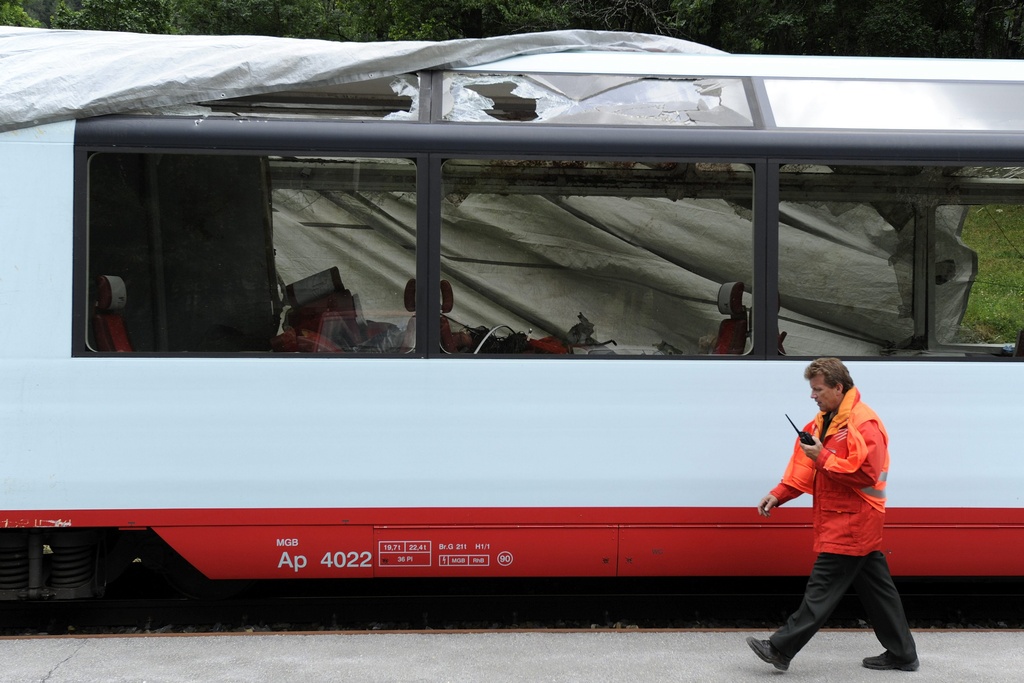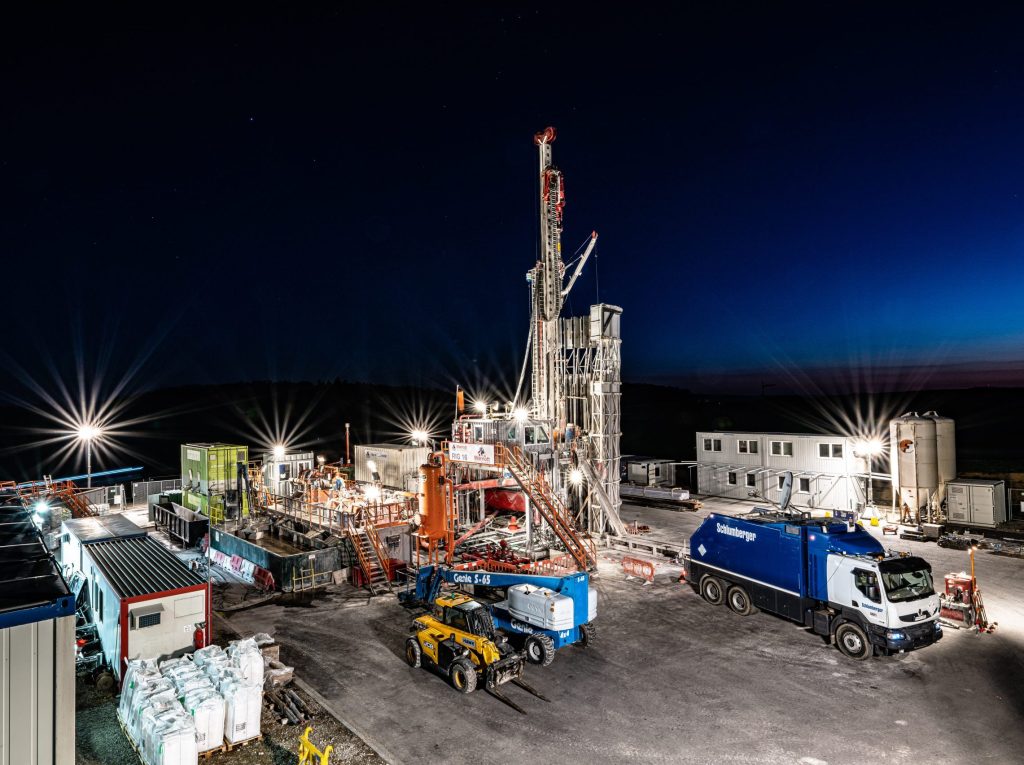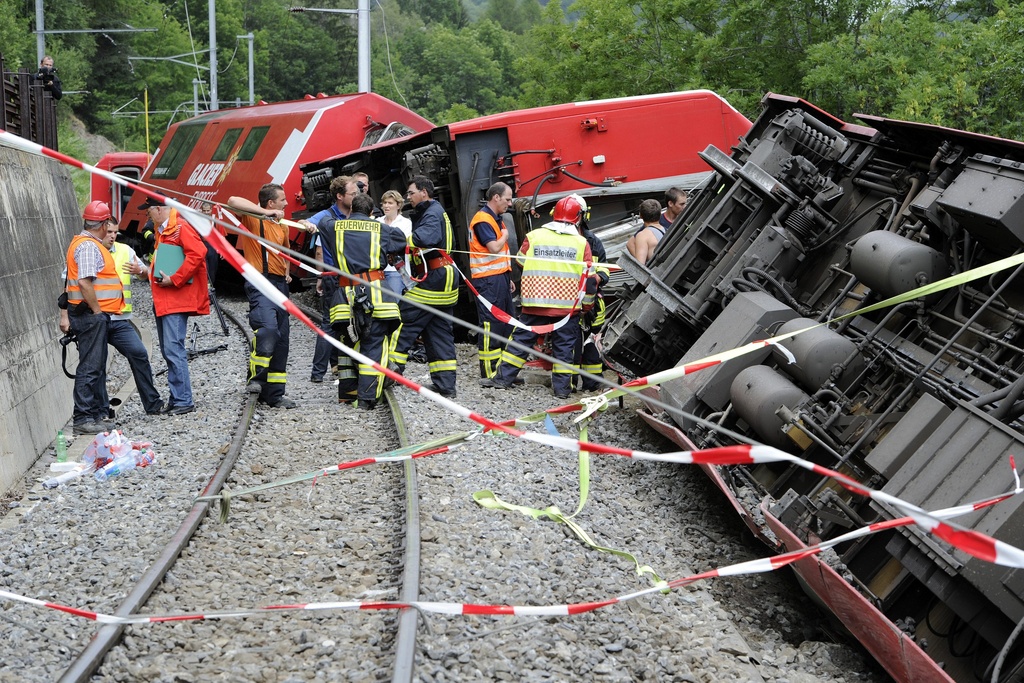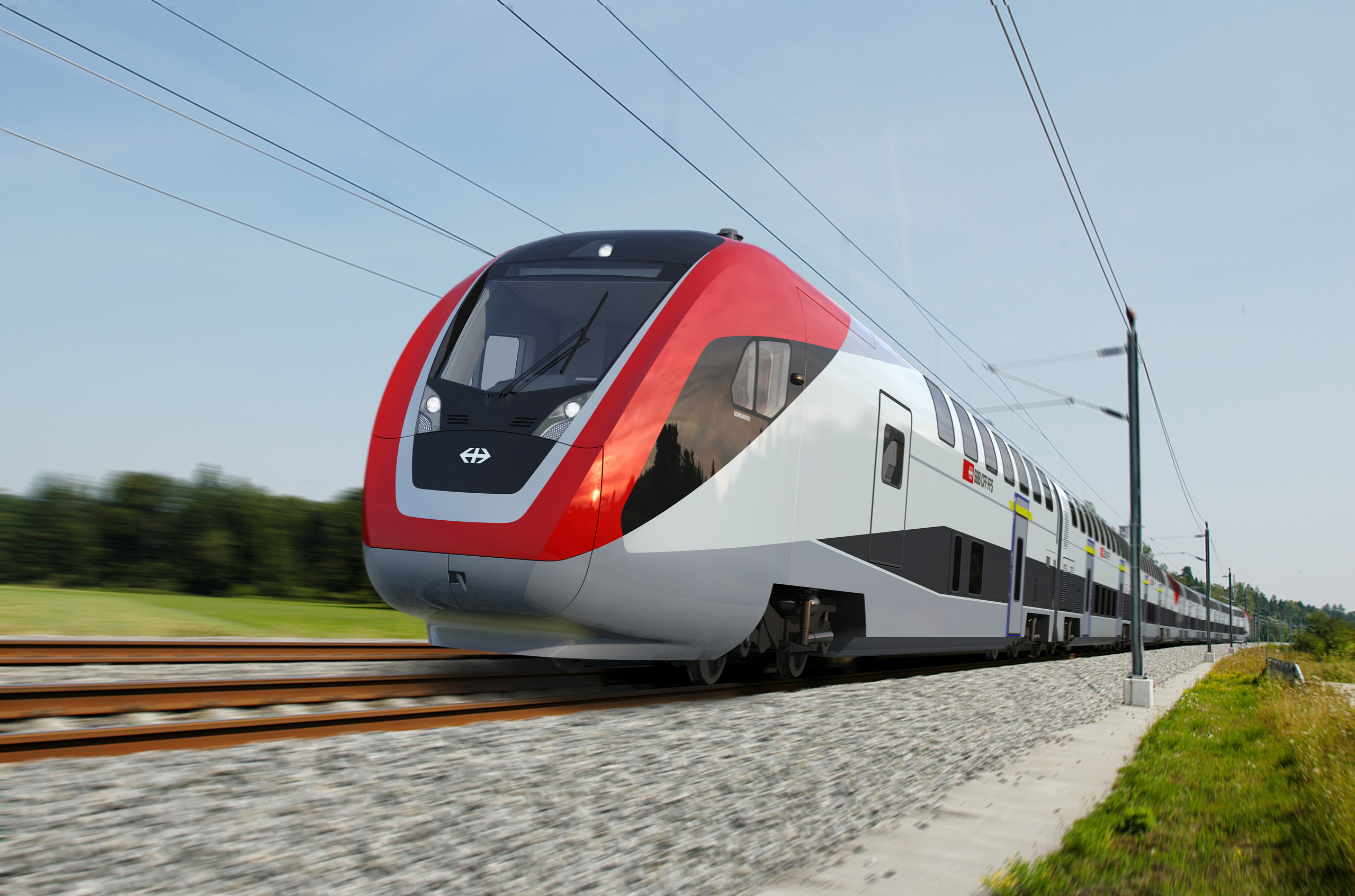Human error caused Glacier Express crash

A probe into the derailment of a Swiss tourist train in which one person died and 42 others were injured has found the driver was going "too fast".
The driver of the Glacier Express train had been going about 20km above the 35km/h permitted level when the accident occurred on July 23.
Federal investigators found he had sped up too early, not allowing the whole train to cross a line marking the end of the 35km/h zone and the start of the 55km/h track.
Representatives of the police, the Valais cantonal government, tourism authorities and railways had all gathered for a news conference announcing the findings on Friday.
Matterhorn Gotthard Bahn said it was “deeply saddened” by the most serious accident in its history and the fact that it was caused by human error had enhanced their dismay.
The driver involved is in a state of shock, said the firm. He has been employed by the firm for eight years and has never before had an accident.
The incident will be reviewed by an investigating magistrate in the coming weeks.
Jacques Melly, vice-president of the Valais cantonal government, told assembled media: “The government of Valais deeply regrets this tragedy. All our thoughts today are with the victims. The whole Valais shares their grief.”
The train had been travelling between Lax and Fiesch in canton Valais and came off the track near a viaduct in the Goms Valley. One Japanese tourist died in the crash and of the 42 people injured, 28 were Japanese.
Eight Japanese tourists are still in hospital. According to a press officer from ANA Sales, part of Japan’s second largest carrier All Nippon Airlines, one of the three tour operators which organised the group’s trip, there is an ANA employee looking after each one of them, in accordance with company custom.
The firm says that it is in negotiations over compensation for the affected tourists. It has also cancelled its two other planned Glacier Express trips in August, although other agencies are continuing to send people.
The accident has been big headline news in Japan over the past week, with many journalists travelling to Switzerland to cover the latest developments.
There was great interest in the arrival of the dead victim’s two sons, who flew over to identify her body earlier this week. Her husband is still in hospital and the sons said that he didn’t want Switzerland’s image to suffer.
Criticism
There has been intense criticism in the Japanese media over the fact that the Glacier Express started running again just two days after the accident. It is, however, only allowed to go at 10km/h on the incident-area track.
Members of the Japanese community who swissinfo.ch spoke to were also surprised at the move, as was the ANA spokesman.
“It’s impossible to imagine, to accept that the train starts running again if you don’t know the cause. In Japan the government does not give permission to run the trains again before the cause is clear,” he said.
Another long-term Japanese Geneva resident, who asked not to be named, said she would not take the train until the reason for the accident had been found.
Jean-Pierre Schmid of the Matterhorn Gotthard Bahn told Friday’s news conference that trains had begun running again as it was an essential railway servicing the whole region.
“Beloved route”
Gen Aoto, president of the Japan Club of Zurich, said that the Glacier Express was one of the most beloved routes for Japanese tourists. “Everyone wants to come to Switzerland at least once in their lifetime,” he told swissinfo.ch.
The group was mainly made up of older retirees, who had saved up for the trip. “They came with big expectations and then encountered such a tragic accident which is very painful for me and other Japanese. We understand what kind of pain they went through. Their feeling of heaven became like hell.”
The Japanese have an image of Switzerland as a safe place. Finding the accident’s cause is one of the most important things the authorities and train company can do to restore this shaken faith, added Aoto.
He added that the fact that Swiss Foreign Minister Micheline Calmy-Rey had apologised to her Japanese counterpart, as had members of the Matterhorn Gotthard Bahn, had not been widely reported in the Japanese media, but that this was important. He pointed to a case in Japan concerning the Swiss lift company Schindler which did not apologise early enough for an accident, causing an outcry.
Cultural differences
The Matterhorn Gotthard Bahn has been receiving help from Roger Zbinden, head of Asian key markets at Switzerland Tourism, who has been living in Japan for seven years.
He said that cultural differences had to be considered in the communications around the accident. This included advising on what to wear – a tie, which is not always a given in Switzerland in the summer – and on emotional content.
“Usually in the west, we start with the facts, we say this was the reason and we say we are sorry,” Zbinden told swissinfo.ch ahead of the media conference.
“In Japan so that you can actually communicate and get the message through, you have to address first the emotional level, so you have to say we are terribly sorry that this happened and our sympathies are with the families of the deceased and the victims. Only after this can you give the facts.”
He said the different reaction to the train being put back into operation quickly was also cultural. For the Swiss, it signalled that the train is safe, but this was certainly not the case of the Japanese.
Isobel Leybold-Johnson, swissinfo.ch and agencies
Previous deadly railway accidents in Switzerland:
In 2006, three railway workers died aboard a runaway train that slammed into another train near Thun.
In February 2002 two people were killed at Chiasso station when a train derailed, injuring five others.
In November 1999 two trains collided on the outskirts of Bern, killing two and injuring 51 others.
In 1994 a maintenance crane swung into an express train in canton Solothurn, killing nine and leaving more than 20 injured.
The worst collision between two trains took place in 1924 in Bellinzona, with 19 dead.
Switzerland’s worst railway disaster took place in 1891, when a bridge collapsed under a train near Basel, killing 71 and injuring 171.

In compliance with the JTI standards
More: SWI swissinfo.ch certified by the Journalism Trust Initiative














You can find an overview of ongoing debates with our journalists here . Please join us!
If you want to start a conversation about a topic raised in this article or want to report factual errors, email us at english@swissinfo.ch.